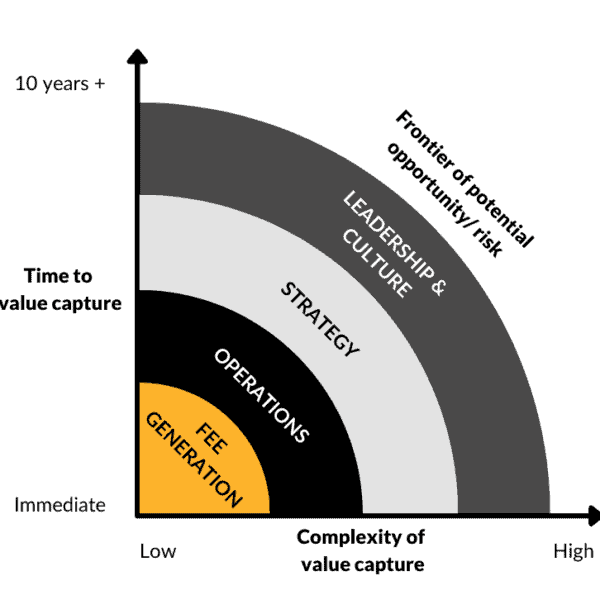It’s an uncomfortable truth that most of us don’t like to state our priorities because this means opening ourselves up to failure. We’re naturally averse to identifying the most important thing, as we’ll then be obliged to follow through on doing it.
In his book Eat That Frog!, Brian Tracy distils the best lessons he’s learned about productivity into one handy guide. In this, he encourages us all to identify the one thing we can do each day that will move us 50 times closer to our goal, as opposed to the many small things that only move us fractionally closer. This might be making an awkward phone call, setting out your plan for the next three years, or advancing with a rebranding project.
If you’re interested in giving it a try, here’s a nugget of wisdom from Mark Twain (which also explains the book’s title): ‘If it’s your job to eat a frog, it’s best to do it first thing in the morning.’
Make your own ‘frog’ – that one priority job – the first thing that you do each day. Avoid distractions, steer clear of the classic tasks that sidetrack you, and get it done before anything else. Tinkering with admin can waste so much time that you don’t end up “eating the frog” until late in the day – if you even do it at all. If you’re able to achieve this, not only will you start your day on a high of achievement, but you’ll also see a significant and disproportional return on it.
Some people find it hard to state their priority and actually follow through on it, claiming that prioritising is something they’re just not good at. However, we all have it in us to make priorities.
One example I often throw out (somewhat provocatively) is collecting your child from school. You know you need to be there at 3.30pm every day, so whatever else happens – whether your car is in the garage or you’ve got a meeting to fit in – you’ll make it happen. You don’t need to be told that your child is a priority; they simply are. This is where the classic Yoda phrase comes to mind: ‘Do or do not. There is no try.’ Own your own priority, accept responsibility for it, and make it happen. Doing this really can change the face of your business.
Believing that something is truly a priority is often half the battle. We can probably all think of tasks that are repeatedly not done – those irritating cans that we constantly kick down the road for ‘another day’. What I’d ask here is: is it not a priority? If nobody is prioritising this, is it because it doesn’t matter, or because you just don’t want to do it?
You might be familiar with the Urgent vs. Important Matrix, which is used to help map out the tasks that are important (of significance or value) and those that are urgent (requiring immediate attention). Tasks can be assigned to one of four categories: urgent but not important, urgent and important, not urgent but important, or not urgent or important.
Typically, the urgent tasks are the ones that’ll draw most of your time. The urgent and important often get done first, closely followed by the urgent but not important. This is why many people are busy on urgent tasks all week, and find themselves getting to the end of it, exhausted, without having advanced strategically at all. In the midst of chaos, they’re just about carrying on.
However, the best returns are often to be had from focusing on the not urgent but important things. This is the area that the matrix identifies as most productive, and it’s typically occupied by tasks such as planning, relationship building, thinking, creating, designing, and strategy.
The Eat That Frog! model doesn’t rely on motivation, which can only last for so long before you burn through it. Instead, it’s a discipline; it relies solely on your acceptance that it’s valuable. Spending all of your time on urgent tasks can cloud your reality, filling your days with incessant and overwhelming chatter. The end result is that your most important task suddenly becomes taking some quiet time out to think and reset; after this, you’re far more likely and able to focus on those not urgent but important things.
As it’s a discipline, this way of thinking and working does require some effort to begin with. You may find that you need to stay on top of it, and get yourself set in the habit. This is particularly the case because frog-worthy priorities are rarely simple: they’re unlikely to be ‘Move X box into Y space’. More often, they involve a degree of complexity that makes them off-putting.
One sector that contains its fair share of frogs is marketing. If you’re a dentist, this typically isn’t your comfort zone – you’re a high-level expert in one area, and that’s where you’ll prefer to operate. A task such as reviewing website content is complicated, requiring you to search out that email from three months ago, read through everything, document your thoughts, pass it on to your colleague… More often than not, it’ll get saved for another day, meaning you’ll miss out on all the benefits that this piece of marketing could have instigated. It would be far better to at least get started, even if you don’t finish – it may still be your frog for tomorrow, but at least you’re making progress.

In fact, a lot of the natural ‘frog’ tasks are those found in the outer layers of the abstraction model (shown above). These are the things that you won’t get told off for not doing, as opposed to urgent and important tasks, for which you’re usually held accountable in some way. And while it’s true that you won’t get called out if you don’t get them done, you also won’t know what you could have had by doing them. This is certainly true for something like branding and team culture – sure, you may only get an extra 5% out of people each day, but when you allow this to accumulate over a month or a year, it’s a significant increase.
We’re not naturally used to doing things in this way, so be prepared to be a novice again. However, this method can help you to structure your world to be productive and effective, even if that’s not second nature to you (and as a naturally disorganised person, I can testify to this). If you’re able to set your priority, and allocate a time to it, e.g. “I’m working on this first thing tomorrow, even if the office catches fire”, you’ll find that the return on that time is more than worth it.
This all being said, outcomes can be relatively easy to assess with a clean pair of eyes. Get in touch if you would like us to take a look.









